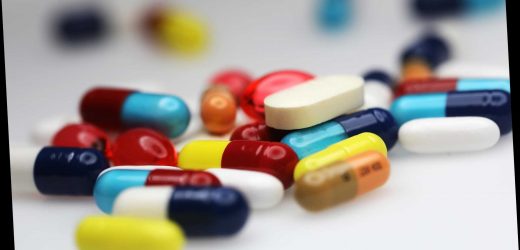PENICILLIN was the first antibiotic, and a game-changer in the human fight against bacterial infectious diseases.
But how was penicillin discovered – and who worked out that it could kill bacteria?
Who invented penicillin?
Penicillin was actually discovered by chance, and later worked on to create a medicine.
In fact, Scottish physician Alexander Fleming, who is credited with discovering its medicinal effects, famously said: "I did not invent penicillin. Nature did that. I only discovered it by accident."
But it was Fleming who first noticed that penicillin stopped the growth of bacteria.
Many scientists, including Howard Florey, Ernst Chain, and Norman Heatley, worked on his discovery and applied it to the idea of curing patients from sepsis.
Ultimately, Mary Hunt found the first natural form of penicillin with the strength to cure a human, on a cantaloup melon.
Who was Alexander Fleming?
Dr. Alexander Fleming was a bacteriologist who was working at St Mary’s Hospital, London, in 1928 when he first 'discovered' penicillin.
He noticed that a mould called Penicillium had prevented growth in colonies of Staphylococcus aureus, a bacteria.
The Penicillium had infected the bacteria in his lab while he was on a summer holiday in Scotland.
Fleming was born in Ayrshire, Scotland, on August 6, 1881, and grew up on his father's farm.
He worked as a shipping clerk before going to study at London University, where he showed his skill at medicine.
Fleming made his name in medicine from his penicillin observations, and also for his work on infected wounds and an enzyme found in saliva and tears.
He was knighted for his scientific achievements in 1944, and died 11 years later on March 11, 1955, aged 73.
Who discovered that penicillin kills bacteria and when?
Alexander Fleming first noticed the effect of penicillin on bacteria in 1928.
But it wasn't until a decade later that Dr. Howard Florey came across Fleming’s work, and he and his team isolated and purified the active ingredient of penicillin.
They also figured out which germs penicillin worked against and how to use it.
Dr Florey was a professor of pathology and director of the Sir William Dunn School of Pathology at Oxford University.
Dr. Ernst Chain also contributed a lot of work to the project, and is a rival for the credit of work on penicillin.
In their lab, penicillin was used to cure mice from severe sepsis in 1940.
A year later they asked for permission to trial their penicillin on an Oxford Police Constable, Albert Alexander, 48.
Alexander had developed a severe and apparently untreatable infection from a small cut on his face.
After five injections he began to recover – but they didn’t have enough of the penicillin medicine and he died.
At that time it took a massive 2,000 litres of mould culture fluid to get enough pure penicillin to treat a single human suffering from sepsis.
Dr. Norman Heatley then set up his laboratory to work on extracting and purifying the active ingredient of penicillin from the mould.
Heatley and Flory went to work with scientists in America in 1941.
There, Mary Hunt brought a melon into the laboratory one day because it was covered in an unusual golden mould.
That mould turned out to be a form of Penicillium with 200 times the amount of the active agent than the form of Penicillium they had been using.
In March 1942, Anne Miller became the first patient to be successfully treated with penicillin, at New Haven Hospital, Connecticut.
The treatment rescued her from near death from sepsis following a miscarriage.
Fleming, Flory and Chain were awarded the Nobel prize in 1945, and, later, Heatley was given an honorary award from Oxford University.
Source: Read Full Article







